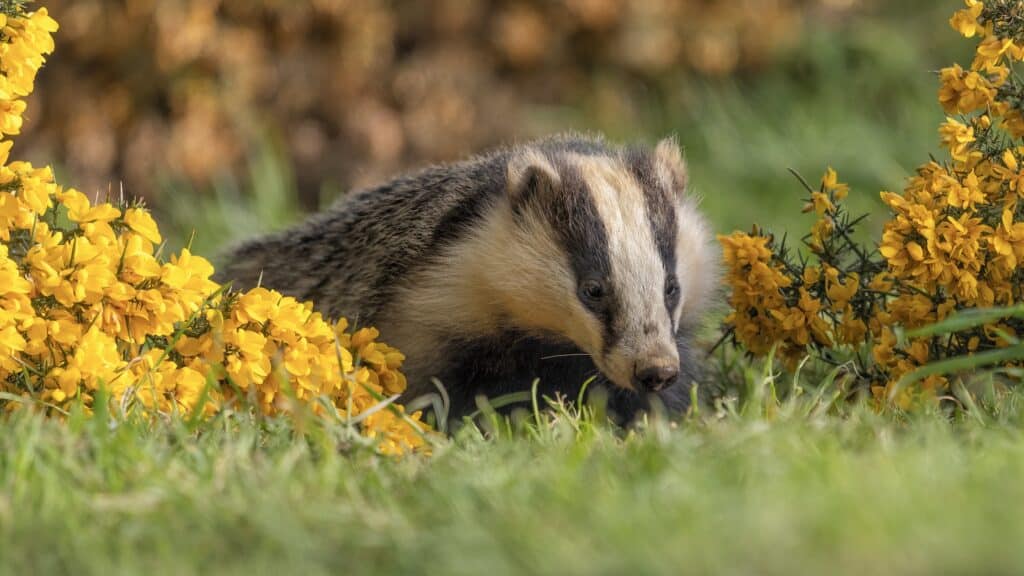In some rare good news for badgers, the Labour government has binned proposals it inherited from the Conservative government that involved further potentially large-scale killing of the iconic mammal.
The move is undoubtedly a welcome one for the conservationists, veterinarians, and organisations, that have been calling for an end to the badger cull. But what the long-term future will look like for badgers is not yet certain under the new government. Labour appears intent on permitting existing culls to continue, despite vowing to “end the ineffective badger cull” in its manifesto. The government is also considering greenlighting a brand new cull in an area of Cumbria.
So while the government’s rejection of its predecessor’s culling plan represents a win for badgers, there is still a difficult and largely unknown road ahead for the protected species.
Tory plan for ‘targeted’ culling
In March, the then Conservative government put its new bovine tuberculosis (bTB) policy proposals out for a consultation Protect the Wild slammed as a ‘sham’. As has been the case for over a decade now, badger culling formed part of the plan for tackling bTB in cows, based on the heavily contested notion that badgers play a significant role in the spread of the disease in herds.
In particular, the previous government laid out a plan for ‘targeted’ culling of badgers from 2026 onwards. This is when the existing cull policy, under which licensed areas kill badgers ‘intensively’ for four years and then continue killing them for a few more years in ‘supplementary’ culls, comes to an end.
The new “targeted badger intervention” plan would have seen badgers killed in ‘cluster’ areas where “evidence suggests badgers are a part of the problem in the spread of disease.” Any remaining badgers would be vaccinated. Though its title suggested that the cull would be limited, the plan did not set limits on the number of clusters that could be licensed to kill badgers each year. It also did not place a limit on the percentage of badger populations that could be killed in clusters.
This would have been a departure from the intensive and supplementary culls, which set an upper cap on the number of 70% of badgers that cull companies can kill in licensed areas. The maximum limit aims to try and avoid local extinctions of the species.
Summing up the proposal, conservation ecologist Tom Langton told Protect the Wild that the then prime minister Rishi Sunak “now wants all the badgers dead.”
Targeted policy ditched
Langton took legal action against the targeted culling consultation, lodging an application for judicial review. Due to these legal proceedings, Langton has been informed that the government has come to a conclusion regarding the targeted cull policy. In short, the government has thrown it in the bin.
Minister for Food Security and Rural Affairs, Daniel Zeichner, made the decision to ditch the plan on 23 August. This was the same day that the BBC aired the documentary Brian May – The Badgers, the Farmers, and Me.
The landmark film followed May and Anne Brummer, CEO of the Save Me Trust, as they worked with a farm to rid its cow herd of bTB. As Brummer explained, their research found that “it’s possible to manage bovine TB within your herd without worrying about an infected badger population.”
A small but important step
Responding to Zeichner’s decision to axe the targeted culling policy, Langton said:
“This is a small but important step towards bringing forwards the abolition of badger culling forever. Labour has previously stated that culling is ineffective and now the Government has scrapped a Consultation that claimed culling worked.”
However, Langton described the Labour government’s decision to continue culling in the immediate future as “shameful” and argued that it contradicts the party’s manifesto pledge.
Instead of proceeding with the targeted culling plan, Zeichner has decided to carry out a policy review. In other words, it’s now clearer what the long-term future will not hold for badgers – but what it will hold for them in the shirt-term is yet to be determined.
In previous comments provided to Protect the Wild, Zeichner described tackling bTB as his “number one priority.” He said:
“I am clear that we will beat bTB and end the cull once and for all, as we committed to doing in our manifesto.
While we need to honour previous commitments made to the farming sector and manage TB hotspots where vaccination cannot be used, I will be working at pace and in partnership with farmers, vets, conservationists and scientists to bring step change to build an ambitious eradication package that protects both livelihoods and wildlife and stamps out this awful disease.”
We need clarity and certainty
What we need – animal lovers, members of the public opposed to the cull, activists who have made enormous personal sacrifices to fight the cull – is clarity and certainty. That can only come from government. Labour must provide it – and soon.
Langton, who co-authored a comprehensive study that found badger culling to be ineffective in tackling bTB in cows, is certain an answer that will satisfy all sides could be found almost immediately. He has urged the government to meet with his team as it works in partnership with stakeholders to formulate a new policy.
The issue of tackling bTB is politically charged, to say the least. But Langton believes the way forward is relatively simple:
“Badger culling must stop, but most of all a new testing regime for cattle is needed to give farmers the powers to use the right tests at the right time to beat TB in the herd where a hidden reservoir remains – something that red tape presently prevents and at massive unnecessary cost to the taxpayer.
It could be resolved in an afternoon with the right people around the table.”
Featured image via caroline legg / Flickr, cropped to 2240×1260, licensed under CC BY 2.0

